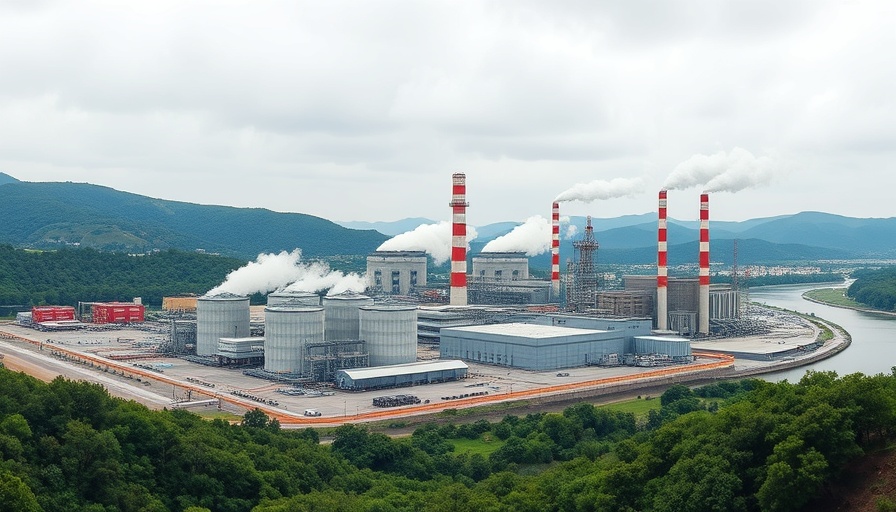
Record Energy Production: A New Milestone for the U.S.
In a landmark year for the United States, the 2024 energy production set a historic high, as detailed by the U.S. Energy Information Administration (EIA). The nation generated an impressive 103 quadrillion British thermal units (BTUs), marking a 1% increase from the previous record in 2023. This surge reflects the evolving landscape of energy sources in the U.S., underscoring a pivotal shift, particularly regarding renewable energies.
Natural Gas Leads the Charge
Natural gas remains the preeminent source of energy, contributing 38% to the total output. This marks a continuation of its dominance, a trend that has been developing since 2011. In contrast, crude oil accounted for 27%, while the coal sector saw a notable decline, producing the lowest output since 1964—only 512 million short tons, making up just 10% of the energy mix. The fading reliance on coal could signify a broader turn towards more sustainable practices.
Renewable Energy Gains Momentum
While natural gas and oil continue to hold significant portions of the energy mix, renewable sources are mounting a compelling case for their larger role in energy production. In 2024, solar energy capacity grew by 25%, and wind energy by 8%. Biofuels also saw a rise, reaching 1.4 million barrels per day, marking a 6% increase. This growth signals an embrace of sustainable practices, a crucial element for boutique hospitality professionals eager to explore eco-friendly opportunities.
The Challenges Ahead for Renewables
Despite the positive trends, the expansion of renewable energy faces significant hurdles. Recent federal policies propose limiting permits for wind energy projects, suggesting a potential setback in clean energy initiatives. Furthermore, plans to open National Petroleum Reserve lands in Alaska for fossil fuel extraction could hinder the U.S.'s renewable energy trajectory. These decisions can directly influence eco-conscious entrepreneurs looking to invest in sustainable lodging options.
Global Trends and Comparisons in Renewable Energy
On the global stage, the U.S. is at risk of falling behind in the clean energy transition. Countries like China have made notable investments in renewables, surpassing coal investments for the first time and leading in new solar and wind installations. The European Union has also reported a significant milestone: electricity generation from solar energy overtook that from coal for the first time in 2024. This simultaneous global shift emphasizes the need for sustained investments in renewable technologies within the U.S.
Looking to the Future: Opportunities and Challenges
The future appears promising for renewable energies, with the EIA predicting continued growth in solar, wind, and battery capacity. The anticipated addition of capacity—32.5 gigawatts from utility-scale solar, 7.7 gigawatts from wind, and 18.2 gigawatts from battery storage—will play an essential role in enhancing energy independence. However, poor policy decisions could lead to a staggering estimated loss of $50 billion in exports and diminish the United States' leadership in the climate discussion.
Conclusion: Strategic Choices for Sustainability
For boutique hospitality professionals looking to invest in sustainability, understanding the changing energy landscape can be crucial. The shift towards renewables presents opportunities for eco-minded entrepreneurs to create environmentally conscious accommodations. As the energy debate unfolds, it is vital to advocate for policies that support renewable energy expansion and mitigate reliance on fossil fuels. By recognizing these changes, hospitality managers can align their operations with the future of energy production, ensuring a more sustainable business model that meets the rising demands of climate-conscious travelers.
 Add Row
Add Row  Add
Add 




 Add Row
Add Row  Add
Add 

Write A Comment